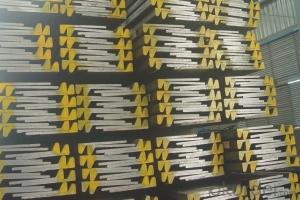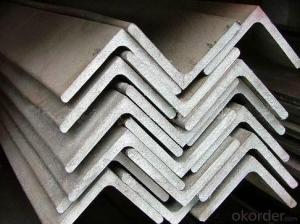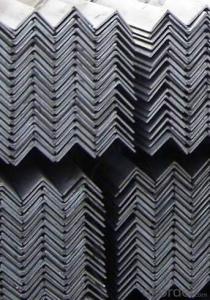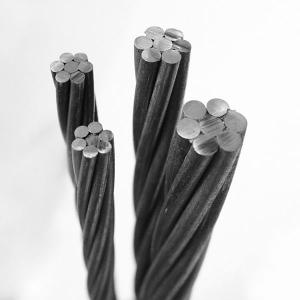Unequal Angle Steel Carbon steel L profile ASTM Standard
- Loading Port:
- Tianjin
- Payment Terms:
- TT or LC
- Min Order Qty:
- 30 m.t.
- Supply Capability:
- 30000 m.t./month
OKorder Service Pledge
OKorder Financial Service
You Might Also Like
Product Description:
OKorder is offering Unequal Angle Steel Carbon steel L profile ASTM Standard at great prices with worldwide shipping. Our supplier is a world-class manufacturer of steel, with our products utilized the world over. OKorder annually supplies products to European, North American and Asian markets. We provide quotations within 24 hours of receiving an inquiry and guarantee competitive prices.
Product Applications:
Unequal Angle Steel Carbon steel L profile ASTM Standard are ideal for structural applications and are widely used in the construction of buildings and bridges, and the manufacturing, petrochemical, and transportation industries.
Product Advantages:
OKorder's Unequal Angle Steel Carbon steel L profile ASTM Standard are durable, strong, and resist corrosion.
Main Product Features:
· Premium quality
· Prompt delivery & seaworthy packing (30 days after receiving deposit)
· Corrosion resistance
· Can be recycled and reused
· Mill test certification
· Professional Service
· Competitive pricing
Product Specifications:
Sizes: 25mm-250mm | ||
a*t | ||
25*2.5-4.0 | 70*6.0-9.0 | 130*9.0-15 |
30*2.5-6.6 | 75*6.0-9.0 | 140*10-14 |
36*3.0-5.0 | 80*5.0-10 | 150*10-20 |
38*2.3-6.0 | 90*7.0-10 | 160*10-16 |
40*3.0-5.0 | 100*6.0-12 | 175*12-15 |
45*4.0-6.0 | 110*8.0-10 | 180*12-18 |
50*4.0-6.0 | 120*6.0-15 | 200*14-25 |
60*4.0-8.0 | 125*8.0-14 | 250*25 |
Packaging & Delivery of Hot Rolled Unequal Angle Steel
1. Packing: it is nude packed in bundles by steel wire rod
2. Bundle weight: not more than 3.5MT for bulk vessel; less than 3 MT for container load
3. Marks:
Color marking: There will be color marking on both end of the bundle for the cargo delivered by bulk vessel. That makes it easily to distinguish at the destination port.
Tag mark: there will be tag mark tied up on the bundles. The information usually including supplier logo and name, product name, made in China, shipping marks and other information request by the customer.
If loading by container the marking is not needed, but we will prepare it as customer request.
4. Transportation: the goods are delivered by truck from mill to loading port, the maximum quantity can be loaded is around 40MTs by each truck. If the order quantity cannot reach the full truck loaded, the transportation cost per ton will be little higher than full load.
5. Delivered by container or bulk vessel
FAQ:
Q1: Why buy Materials & Equipment from OKorder.com?
A1: All products offered byOKorder.com are carefully selected from China's most reliable manufacturing enterprises. Through its ISO certifications, OKorder.com adheres to the highest standards and a commitment to supply chain safety and customer satisfaction.
Q2: How do we guarantee the quality of our products?
A2: We have established an advanced quality management system which conducts strict quality tests at every step, from raw materials to the final product. At the same time, we provide extensive follow-up service assurances as required.
Q3: How soon can we receive the product after purchase?
A3: Within three days of placing an order, we will begin production. The specific shipping date is dependent upon international and government factors, but is typically 7 to 10 workdays.
Q4: What makes stainless steel stainless?
A4: Stainless steel must contain at least 10.5 % chromium. It is this element that reacts with the oxygen in the air to form a complex chrome-oxide surface layer that is invisible but strong enough to prevent further oxygen from "staining" (rusting) the surface. Higher levels of chromium and the addition of other alloying elements such as nickel and molybdenum enhance this surface layer and improve the corrosion resistance of the stainless material.
Q5: Can stainless steel rust?
A5: Stainless does not "rust" as you think of regular steel rusting with a red oxide on the surface that flakes off. If you see red rust it is probably due to some iron particles that have contaminated the surface of the stainless steel and it is these iron particles that are rusting. Look at the source of the rusting and see if you can remove it from the surface.
Images:
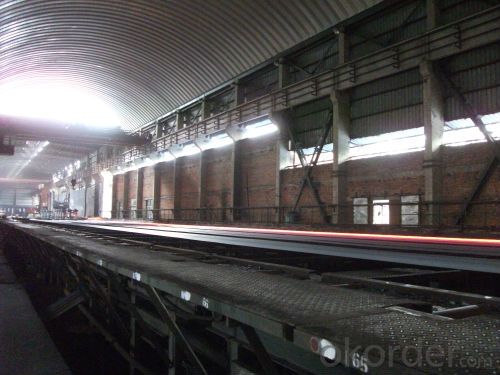

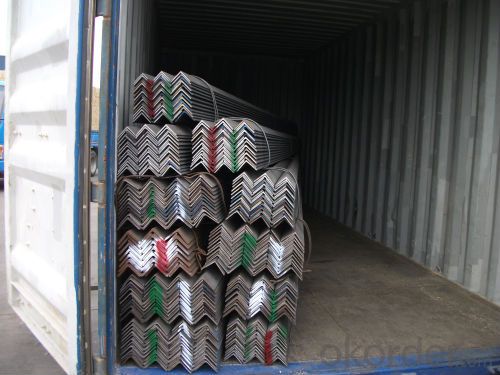
- Q:How do steel angles contribute to sustainable transportation infrastructure?
- There are several ways in which steel angles contribute to sustainable transportation infrastructure. To begin with, steel angles are essential in building bridges and highways. Their strength and durability make them perfect for supporting heavy loads and enduring the harsh conditions that transportation infrastructure faces. Consequently, structures constructed with steel angles have a longer lifespan, reducing the need for frequent repairs or replacements. This not only saves money but also lessens the environmental impact associated with the production and disposal of construction materials. Furthermore, the use of steel angles in the construction of transportation infrastructure allows for more efficient designs. Engineers can create innovative and lightweight structures with the versatility of steel angles, resulting in the requirement of less material overall. This leads to reduced energy consumption during the construction process and decreased emissions during transportation and installation. Moreover, steel angles are recyclable. They can be easily recycled and utilized to manufacture new steel products when they reach the end of their lifespan. This lessens the demand for raw materials and minimizes waste sent to landfills. The recycling process also requires less energy and emits fewer greenhouse gases compared to the production of new steel, making it an environmentally friendly choice. Additionally, steel angles can contribute to sustainable transportation infrastructure by facilitating the integration of sustainable technologies. They can support solar panels or wind turbines, enabling the generation of clean energy to power transportation systems. By incorporating renewable energy sources into infrastructure projects, the reliance on fossil fuels can be reduced, resulting in decreased greenhouse gas emissions and a more sustainable transportation system. In conclusion, steel angles have a crucial role to play in sustainable transportation infrastructure. Their strength, durability, recyclability, and ability to support sustainable technologies make them an environmentally friendly choice. By incorporating steel angles in the construction of bridges, highways, and other transportation structures, we can create a more sustainable and resilient transportation system that reduces the environmental impact and promotes a greener future.
- Q:Can steel angles be used for support structures?
- Yes, steel angles can be used for support structures. Steel angles are commonly used in construction and engineering projects to provide structural support and stability. They are versatile and can be easily welded or bolted together to form sturdy support structures.
- Q:Where does channel steel use more? Where does angle iron use more?
- The stainless steel angle can be made up of different stress components according to the different structure, and it can also be used as the connecting piece between the components. Widely used in a variety of architectural and engineering structures, such as beams, bridge [/url], transmission tower, lifting transport machinery, ships, industrial furnace, reaction tower, container rack and warehouse shelves.Stainless steel angle steel is constructed with carbon structural steel. It is a simple section steel. It is mainly used in the frame of metal component and workshop. In use, better weldability, plastic deformation and mechanical strength are required. The raw material for producing stainless steel angle steel is low carbon square billet, the finished product is made of stainless steel and the angle iron is delivered by hot rolling forming, normalizing or hot rolling.
- Q:Are steel angles fire-resistant?
- Steel angles possess a certain degree of fire resistance. Steel, as a non-combustible substance, does not ignite or contribute to the combustion process. Its exceptional melting point, typically hovering at 1370°C (2500°F), ensures that it retains its structural integrity even when subjected to high temperatures. Nevertheless, it is crucial to recognize that the fire resistance of a structure or component reliant on steel angles hinges on various factors, such as the design, dimensions, and arrangement of said angles, as well as the implementation of fire protection measures. Fire-resistant coatings, fireproofing substances, or fire-resistant insulation can be employed to bolster the fire resistance of steel angles. These supplementary fire protection methods have the capacity to provide a certain level of insulation, impeding the transfer of heat to the steel and prolonging the time it takes for the steel to reach its critical temperature. This grants occupants more time to evacuate the premises and affords firefighters an extended period to manage the fire. In conclusion, steel angles inherently possess fire resistance due to the properties of steel. However, the implementation of appropriate fire protection measures can augment their fire resistance capabilities.
- Q:What are the different methods of reinforcing steel angles?
- There are several methods of reinforcing steel angles, including using additional steel plates or bars to increase strength, welding additional steel angles or plates to provide additional support, or using structural adhesives to bond the steel angles together. Additionally, using bracing or connecting the angles to other structural components can also reinforce their strength.
- Q:Can steel angles be used for machinery frames?
- Certainly, machinery frames can utilize steel angles. The construction and manufacturing industries frequently employ steel angles due to their robustness and adaptability. They serve as a means of furnishing structural reinforcement and stability in a multitude of applications, including machinery frames. Steel angles present an economically viable option as they are readily accessible and can be conveniently crafted to meet precise design specifications. Moreover, steel angles exhibit exceptional load-bearing capability and resistance to deformation, rendering them well-suited for supporting hefty machinery and equipment. Their inflexible and long-lasting characteristics guarantee the steadfastness and endurance of machinery frames, establishing them as a dependable choice within industrial environments.
- Q:What is the maximum temperature steel angles can withstand?
- The maximum temperature that steel angles can withstand depends on the specific grade of steel used. Generally, carbon steel angles can withstand temperatures up to around 600-650 degrees Celsius, while stainless steel angles can withstand higher temperatures, typically up to around 900-1100 degrees Celsius. However, it is important to consult the manufacturer's specifications for the specific steel grade being used to determine its maximum temperature tolerance.
- Q:Are steel angles suitable for manufacturing support brackets for conduits?
- Yes, steel angles are commonly used for manufacturing support brackets for conduits due to their strength, durability, and ability to provide structural support.
- Q:What are the different types of steel angles used in storage tank construction?
- There are several types of steel angles used in storage tank construction, including L-shaped angles, T-shaped angles, and unequal angles. L-shaped angles are commonly used for the tank shell and roof support, while T-shaped angles are often used for the tank bottom and annular ring. Unequal angles are used for reinforcing various sections of the tank structure.
- Q:What are the different methods for joining steel angles?
- There are several methods for joining steel angles, including welding, bolting, riveting, and using adhesive bonding. Welding is commonly used and involves fusing the angles together using heat. Bolting involves using bolts, nuts, and washers to secure the angles together. Riveting involves using rivets to create a permanent joint. Adhesive bonding uses strong adhesives to bond the angles together. The choice of method depends on factors such as the load-bearing requirements, aesthetics, and the specific application of the steel angles.
1. Manufacturer Overview |
|
|---|---|
| Location | |
| Year Established | |
| Annual Output Value | |
| Main Markets | |
| Company Certifications | |
2. Manufacturer Certificates |
|
|---|---|
| a) Certification Name | |
| Range | |
| Reference | |
| Validity Period | |
3. Manufacturer Capability |
|
|---|---|
| a)Trade Capacity | |
| Nearest Port | |
| Export Percentage | |
| No.of Employees in Trade Department | |
| Language Spoken: | |
| b)Factory Information | |
| Factory Size: | |
| No. of Production Lines | |
| Contract Manufacturing | |
| Product Price Range | |
Send your message to us
Unequal Angle Steel Carbon steel L profile ASTM Standard
- Loading Port:
- Tianjin
- Payment Terms:
- TT or LC
- Min Order Qty:
- 30 m.t.
- Supply Capability:
- 30000 m.t./month
OKorder Service Pledge
OKorder Financial Service
Similar products
New products
Hot products
Hot Searches
Related keywords









